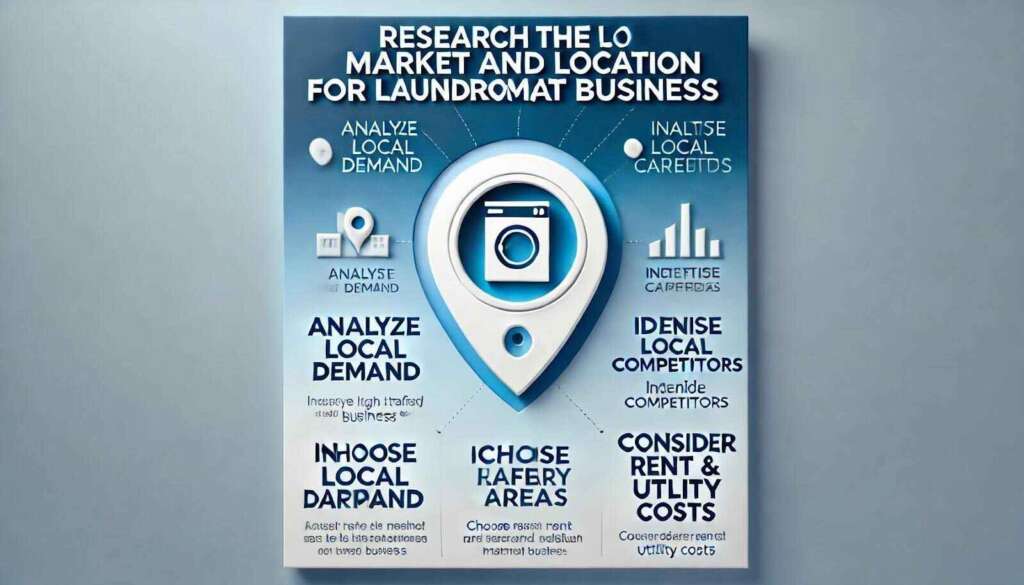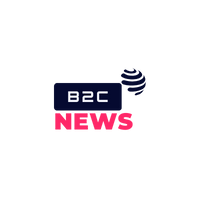Laundromats are making a surprising comeback in today’s economy. Far from being outdated or low-margin ventures, they’ve evolved into highly profitable businesses, blending technology, convenience, and community needs. With the global laundry services market projected to hit $118 billion by 2026 (source), laundromats are no longer just a “nice-to-have” but a staple in urban living.
The growing population of renters, students, and professionals without access to in-unit washers has boosted demand for the self-service laundromat industry. Modern laundromats now offer app-enabled machines, energy-efficient solutions, and premium services like wash-and-fold, attracting a wider customer base. These businesses also benefit from a recession-resistant model—people always need clean clothes, regardless of the economy.
In this guide, we’ll uncover why laundromats are the ultimate business opportunity, covering everything from research and planning to management and growth strategies. Whether you’re an aspiring entrepreneur or an investor looking for stable returns, laundromats deserve your attention.
Key Takeaway for owning a clothes washing service: Understand your target market to maximize cash flow. Laundromats are thriving due to urban demand, technological advancements, and a recession-proof business model, making them a smart investment in 2025 and beyond.
Step 1: Research the Market and Location

Before diving into the laundromat business, thorough market research and location analysis are critical. Where you set up shop can determine whether you attract a steady flow of customers or struggle to break even.
Why Location Is Critical
The success of a laundromat heavily depends on its proximity to high-demand areas. Look for locations with:
- A high density of renters or apartment complexes with no in-unit laundry.
- College campuses or urban areas with students and young professionals.
- Areas with limited competition from other laundromats.
For example, urban neighborhoods with a large student population often generate consistent foot traffic. Conversely, an oversaturated market in suburban areas may limit your growth potential. Tools like Google Maps or local demographic data can help identify underserved regions.
Understand Local Competition
Analyzing your competition helps you identify service gaps and opportunities to stand out. Visit nearby laundromats to observe:
- Their pricing structure and service offerings.
- The condition of their equipment and amenities.
- Customer behavior and peak operating hours.
If competitors lack premium services like app-enabled machines, eco-friendly options, or loyalty programs, you can use these gaps to differentiate your business.
Evaluate Market Demand
Market demand can vary widely depending on your target area. To assess demand:
- Conduct surveys or speak to potential customers in the area.
- Analyze population density and average household income to ensure affordability.
- Identify trends, such as increasing rental properties or new apartment developments.
For example, a growing apartment complex with no laundry facilities could signal a lucrative opportunity for a laundromat.
Location Examples
- High-Demand Areas: Urban neighborhoods, near colleges, or close to large apartment complexes.
- Low-Demand Areas: Rural or suburban areas with widespread access to in-home laundry.
Data table suggestion: Comparison of high vs. low-demand clothes washing service locations.
Key Takeaway: A well-researched location with high demand and limited competition can set the foundation for a profitable laundromat business.
Step 2: Create a Business Plan

A solid business plan is essential to turn your laundromat vision into a reality. It outlines your goals, strategies, and financial projections, providing a roadmap for success.
What to Include in Your Business Plan
Your business plan should cover the following components:
- Business Model: Will your clothes washing service be self-service, offer drop-off services, or a hybrid of both?
- Target Market: Define your ideal customer profile—students, renters, or busy professionals.
- Operational Plan: Detail your equipment, staffing needs, and operational processes.
- Financial Projections: Estimate revenue, operating expenses, and profit margins.
For example, if your target market consists of students, you might prioritize affordability and offer free Wi-Fi to create a study-friendly environment in your laundry business.
Estimate Startup Costs
Startup costs for a clothes washing service can vary, but they typically include:
- Leasing/Renovation Costs: Rent for a commercial space, interior design, and setup.
- Equipment such as modern washing machines is crucial for success in the laundry industry: Commercial washers, dryers, and payment systems. High-efficiency machines may cost more initially but save on utility bills.
- Permits and Licenses: Local business permits, water permits, and health regulations.
- Marketing Budget: Initial campaigns to attract your first wave of customers.
Chart suggestion: Breakdown of typical laundromat startup costs by category.
Explore Financing Options
Many entrepreneurs finance their laundromats through loans, grants, or equipment leasing. Some popular options include:
- Small Business Administration (SBA) Loans: Low-interest loans for qualified startups.
- Lease-to-Own EquipmentOffered by companies like those in the clothes washing service industry, innovative services can set your business apart. LaundryLux for cash flow-friendly financing.
Marketing Strategy
Your business plan should include a marketing roadmap, such as:
- Leveraging local ads to attract nearby renters and students.
- Creating a Google Business Profile for visibility.
- Offering grand opening promotions like discounted laundry rates.
Key Takeaway: A comprehensive business plan, including financial forecasts and marketing strategies, is the foundation of a successful laundromat business.
Step 3: Design and Set Up Your Laundromat
The setup and design of your laundromat can greatly influence customer experience and satisfaction. A clean, welcoming space with modern amenities can turn first-time visitors into loyal customers.
Choose the Right Equipment
Investing in the right equipment is crucial. Options include:
- Coin-Operated Machines: Traditional and reliable, but less convenient for tech-savvy customers.
- Card-Based Systems: Allow customers to pay with credit or debit cards, offering added convenience.
- App-Enabled MachinesThe latest trend in laundromats, enabling users to pay and monitor machines via smartphone apps, is revolutionizing the laundry industry.
Modern, energy-efficient washers and dryers reduce utility costs and environmental impact, enhancing customer experience and saving you money in the long run. Energy Star-certified machines, for instance, can lower water and energy usage by up to 30%.
Create a Welcoming Atmosphere
Customers value a clean, comfortable space. To enhance the customer experience:
- Provide ample seating, free Wi-Fi, and charging stations.
- Install TVs or music systems to create a relaxing environment.
- Offer vending machines with snacks, beverages, and laundry supplies.
Image suggestion: A modern clothes washing service with bright interiors, comfortable seating, and app-enabled machines will enhance customer experience and attract more visitors.
Implement Energy-Efficient Solutions
Energy efficiency is not just eco-friendly—it’s cost-effective. Solar panels, LED lighting, and high-efficiency machines can significantly reduce your monthly utility bills.
For instance, an energy-efficient clothes washing service can save $5,000–$10,000 annually is a typical investment for owning a laundromat, covering equipment and operational costs. compared to traditional setups. Highlighting your eco-friendly initiatives can also attract environmentally conscious customers.
Key Takeaway: A well-designed clothes washing service with modern equipment, comfortable amenities, and energy-efficient solutions can boost customer loyalty and reduce operational costs.
Step 4: Market Your Laundromat to the Right Audience
Marketing is essential for attracting customers to your laundromat, especially in a competitive area. A targeted marketing strategy helps you reach your audience, build your brand, and establish a steady flow of loyal clients.
Build an Online Presence
Having an online presence is critical for any business in 2025. Here’s how to make your clothes washing service visible to potential customers:
- Google Business Profile: Create and optimize a profile with accurate details like location, hours, and services. Include customer reviews and images of your clothes washing service.
- Website: Build a mobile-friendly website showcasing your offerings, pricing, and amenities. Add a blog with tips on laundry care or sustainability to boost SEO.
- Online Advertising: Run Google Ads targeting local keywords like “best laundromat near me” or “coin laundry in [city].”
Leverage Social Media
Social media platforms like Instagram and Facebook are great for engaging with your local community. Post content that resonates with your target audience:
- Showcase behind-the-scenes stories, such as how you maintain cleanliness or upgrade equipment.
- Share customer testimonials and “before-and-after” laundry transformations.
- Host contests or giveaways, like free laundry credits for followers who tag your page.
Offer Promotions and Incentives
Promotions are a great way to attract new customers and encourage repeat visits. Some ideas include:
- Grand Opening Deals can attract customers to your new clothes washing service, making a strong entry into the laundry business: Offer free laundry loads or discounted rates during your first month.
- Loyalty Programs: Reward frequent customers with points redeemable for free services.
- Seasonal Promotions: Offer discounts on bulk loads during back-to-school seasons or holidays.
Partner with Local Businesses
Collaborate with nearby businesses to expand your reach. For example:
- Partner with apartment complexes to offer special discounts to their tenants.
- Team up with dry cleaners or tailoring shops for cross-promotional opportunities.
Key Takeaway: A strong online presence, engaging social media content, and strategic promotions can make your laundromat the go-to choice in your area.
Step 5: Manage and Grow Your Laundromat Business
Once your laundromat is up and running, effective management and growth strategies are key to long-term success. By optimizing operations and exploring new revenue streams, you can scale your business sustainably.
Tools for Effective Management
Investing in management tools can simplify day-to-day operations and improve efficiency:
- POS Systems are essential for clothes washing service owners to efficiently manage transactions in the laundry business.: Use platforms like LaundryPulse or PayRange to monitor machine usage and accept digital payments.
- Remote Monitoring: Apps that track machine performance and notify you of maintenance needs.
- Customer Feedback Tools: Collect and analyze customer reviews to identify areas for improvement.
Build Customer Loyalty
Satisfied customers are more likely to return and recommend your laundromat to others. Foster loyalty by:
- Creating a clean and welcoming environment with friendly staff.
- Offering perks like free Wi-Fi, comfortable seating, and complimentary coffee.
- Sending follow-up emails or texts thanking customers for their visit and sharing promotions can enhance customer loyalty in your laundromat.
Expand Services and Revenue Streams
Diversifying your services can increase profitability. Consider adding:
- Wash-and-Fold Services: Cater to busy professionals who prefer drop-off convenience.
- Pickup and Delivery Options: Attract customers who can’t visit your laundromat regularly.
- Eco-Friendly Add-OnsOffer premium pricing for environmentally friendly detergents or fabric softeners to attract environmentally conscious laundromat owners.
Example: Adding wash-and-fold services can generate an additional 20%-30% revenue per customer.
Key Takeaway: Efficient management, excellent customer service, and diversified services are the cornerstones of a growing clothes washing service business.
Step 6: Scaling Without Sacrificing Quality
Scaling your laundromat business requires strategic planning to maintain quality while expanding operations. Whether it’s opening new locations or upgrading existing services, growth should be sustainable.
Open Additional Locations
Once your first laundromat is running successfully, consider expanding to other areas with high demand. Repeat the same research process to identify underserved neighborhoods or urban hubs.
Invest in Upgrades
Scaling doesn’t always mean opening new locations. Enhancing your current operations can also drive growth. For example:
- Upgrade to newer, energy-efficient machines that attract environmentally conscious customers.
- Add advanced payment systems, like mobile apps or card readers, for convenience.
- Expand hours of operation to accommodate more customers.
Franchise Your Business
If your laundromat model is highly successful, consider franchising. This allows you to scale rapidly while minimizing your workload. Focus on documenting your business processes and branding to create a scalable franchise system.
Build a Strong Team
As your laundry business grows, you’ll need reliable staff to maintain quality and ensure customer satisfaction. Provide ongoing training to ensure they deliver exceptional customer service and operate equipment efficiently.
Key Takeaway: Scaling your clothes washing service is achievable through new locations, operational upgrades, or franchising. Maintaining quality should remain a top priority during expansion.
Summary
- Laundromats are thriving due to high demand in urban areas, recession-resistant models, and innovative technology.
- Success starts with thorough market research and selecting a location with high customer demand and low competition.
- A well-planned business strategy with modern amenities, marketing efforts, and efficient management tools ensures growth and customer retention.
- Scaling your laundromat business requires Sustainable expansion is key for laundromat owners looking to thrive in the competitive laundry industry. while maintaining quality and customer satisfaction.
FAQs
1. What is the average ROI for a laundromat business?
The average ROI for laundromats ranges from 20% to 35%, depending on location, competition, and management efficiency.
2. How can I reduce utility costs in a laundromat?
Upgrade to energy-efficient machines, adjust water heating systems, and implement water-saving techniques to cut costs.
3. What are the most effective ways to market a clothes washing service online?
Leverage local SEO, create engaging content, and run targeted ads on social media platforms to attract local customers.
4. Should I offer wash-and-fold or pickup services to increase revenue?
Yes, offering both services can attract a wider range of customers, especially those looking for convenience and time-saving options.
5. How do I manage equipment maintenance efficiently?
Implement a regular maintenance schedule, train staff for basic upkeep, and establish a relationship with reliable service providers for emergencies.

